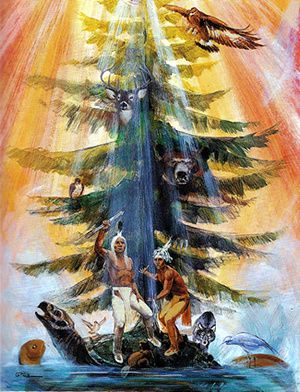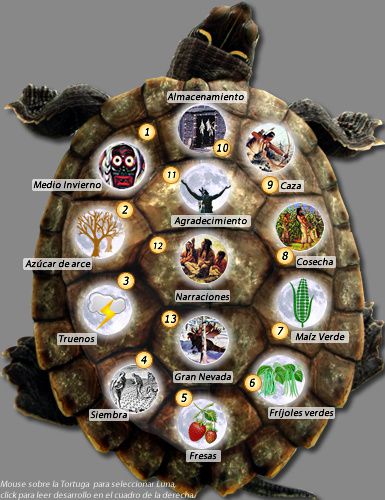Sunrise and sunset, the cycle of the moon and summer, the growing season, and winter, when the earth sleeps, were used by the Iroquois to measure time.
Each of the 13 full moons of the year was celebrated in a special way with elaborate rituals of thanksgiving to the Great Creator, through word, music and dance.
Everything that has life has integrity and must be given thanks before it is used. Thus, the animals are thanked before being eaten and the plants before being harvested.
The community met in the communal houses, the women were located in the west and the men in the east. Only in certain ceremonies such as weddings or funerals, genders were mixed.

The turtle's back is an important symbol for the community iroquois, above that of Grandmother Turtle (Earth), the Iroquois Tree of Peace grows. The thirteen plates on the back represent the thirteen full moons of the cycle of the seasons iroquoises and show the relationship between the Earth and the Moon; these areas are named according to seasonal practices and natural environmental events.
The following of the calendar will be detailed in separate articles.

Midwinter – January-February
Maple sugar – Early or mid-March
Thunders – Spring
Sowing – May
Strawberries – June
Green beans – July/August
Green corn – August/September
Harvest – October
From the hunter – autumn
Constitution of reserves -autumn
Gratitude – November
Stories - November/December
Snowfall – December/January